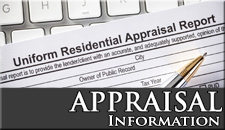How to Calculate Property Tax
Property taxes are comprised of your local mill rates and the assessed value of your property. For a complete list of Massachusetts Millage rates, click here. The video is using an exaggerated example to show how both of the components work together to produce a property tax. If you are a home owner and do feel that you are over assessed, you may want to speak to a local appraiser and seek their expertise on your specific situation.
Millage “Mill” Rates For Massachusetts 2014-2017
Mill Rates for Barnstable County, Berkshire County, Bristol County, Dukes County, Essex County, Franklin County, Hampden County, Hampshire County, Middlesex County, Nantucket County, Norfolk County, Plymouth County, Suffolk County, Worcester County 2017-mill-rates | 2016-mill-rates | 2015-mill-rates | 2014-mill-ratesAll Massachusetts Cities Abington Acushnet Center Adams Agawam Town Amesbury Town Amherst Center Andover Arlington Athol Attleboro Ayer Baldwinville Barnstable Town Barre Belchertown Bellingham Belmont Beverly Blandford Bliss Corner Boston Bourne Boxford Braintree Town Brewster Bridgewater Brockton Brookfield Brookline Burlington Buzzards Bay Cambridge Chatham Chelsea Cheshire Chester Chicopee Clinton Cochituate Cordaville Danvers Dedham Deerfield Dennis Dennis Port Devens Dover Duxbury East Brookfield East Dennis East Douglas East Falmouth East Harwich East Pepperell East Sandwich Easthampton Town Essex Everett Fall River Falmouth Fiskdale Fitchburg Forestdale Foxborough Framingham Franklin Town Gardner Gloucester Granby Great Barrington Green Harbor-Cedar Crest Greenfield Town Groton Hanson Harwich Center Harwich Port Hatfield Haverhill Hingham Holbrook Holland Holyoke Hopedale Hopkinton Housatonic Hudson Hull Huntington Ipswich Kingston Lawrence Lee Lenox Leominster Lexington Littleton Common Longmeadow Lowell Lunenburg Lynn Lynnfield Madaket Malden Mansfield Center Marblehead Marion Center Marlborough Marshfield Marshfield Hills Mashpee Neck Mattapoisett Center Maynard Medfield Medford Melrose Methuen Town Middleborough Center Milford Millers Falls Millis-Clicquot Milton Monomoscoy Island Monson Center Monument Beach Nahant Nantucket Needham New Bedford New Seabury Newburyport Newton North Adams North Amherst North Brookfield North Eastham North Falmouth North Lakeville North Pembroke North Plymouth North Scituate North Seekonk North Westport Northampton Northborough Northfield Northwest Harwich Norton Center Norwood Ocean Bluff-Brant Rock Ocean Grove Onset Orange Orleans Oxford Palmer Town Peabody Pepperell Petersham Pinehurst Pittsfield Plymouth Pocasset Popponesset Popponesset Island Provincetown Quincy Randolph Raynham Center Reading Revere Rockport Rowley Russell Rutland Sagamore Salem Salisbury Sandwich Saugus Scituate Seabrook Seconsett Island Sharon Shelburne Falls Shirley Siasconset Smith Mills Somerset Somerville South Amherst South Ashburnham South Deerfield South Dennis South Duxbury South Lancaster South Yarmouth Southbridge Town… Continue Reading
Calculating Square footage with ANSI
American National Standard Institute provides a manual on the way to measure the inside sq.footage of a home. The American National Standard For Single-Family Residential Buildings For Single-Family Residential Buildings Download a copy for your office today. Sometime you may come across differences between an appraiser's measurement and what is on public record. Assessors for public records may often just multiply the square footage of your first floor to get the second floor. Common discrepancies may occur in Cape-Cod style homes (or homes where the second floor doesn't have the same footprint as the first. Lets say for example you have 800 sq.ft. on the first floor. During the assessment, an assessor may have simply multiplied 800 by 1.5 (1.5 representing 1.5 floors) to get 1,200 sq.ft. of living area. Appraisers (different than the assessor) will measure according to ANSI (see below) As you can see, an appraiser will not count any space below 5 feet in that area (assuming it meets the above criteria).This is a great manual to have on hand. See how appraisers measure a home today.
AVM’s, Zillow and Zestimates and More
Zillow has made their "Zestimate" synonymous with home value. Often home owners use this figure as a guide to whether their home has increased or decreased in value or simply as a tool for prospective buyers. Zillow's Zestimate is what appraisers call an AVM Automated valuation model. These are essentially models that can provide real estate property valuations using mathematical modelling combined with a database. Several AVMs calculate a property's value at a specific point in time by analyzing values of comparable properties. Accuracy can vary. Read more about Zillow's approach. So why have an appraisal if an AVM can do it all? Depending on where you are living, you may laugh at the value given by an AVM or completely agree with the value given. It widely ranges due to the limited data certain regions are able to feed those models. That argument is tenuous as an appraiser's value can also vary depending on the appraiser completing the assignment. So why do we need appraisers? There is a great deal of statistical significance in AVM's so they are not to simply just be discarded. Appraisers may even approach value by similar means. Whether it be by regression analysis, match-paired, comp selection, the process can be very similar. Appraisers however speak more towards the qualitative value of a home. Condition and quality tend to be an oversight to AVM's. As appraisers visit the home and comparables, he or she can attest to the quality and condition and affirm whether certain adjustments are merited. Many times, AVM data is valuating on incorrect data or outdated information. That is why banks, lenders and others require an appraiser for the job. No one is accountable for the figure given in an AVM and that is a comforting reason to hire an appraiser. Appraisers are… Continue Reading
Costs of In-ground pools
An in-ground pool can cost $20,000 - $50,000. It may even cost more depending on quality and how ornate a home owner gets. Pool houses are large costs as well. So what are they worth on an appraisal? If you own an in-ground pool, it may be hard to hear but an in-ground pool is worth what a typical buyer is willing to pay for one. Some buyers do not want a pool and may even consider filling it in upon purchase. Some buyers would love to have one for their family. Because these have mixed feelings, appraisers tend to see how in-ground pools react in your market. Are homes with in-ground pools selling for more? for less? the same? Are these pools larger, smaller? Can that size be found? Many of these questions are considered when developing an adjustment value. Depending on your locale, adjustments will vary but rarely will they equate to what it cost to install an in-ground pool. In summary, the cost does not equal the market value. The value of a feature can be extracted by similar sales in the neighborhood. Asking local realtors how homes with pools in your area do may give you a sense of value.






